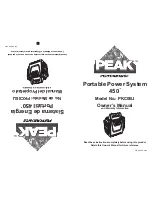
Quick Reference Guide
23
•
When available, use a hands free device.
•
Let the person you are speaking with know you
are driving; if necessary, suspend the call in
heavy traffic or hazardous weather conditions.
Rain, sleet, snow, ice, and even heavy traffic can
be hazardous.
•
Dial sensibly and assess the traffic; if possible,
place calls when you are not moving or before
pulling into traffic. Try to plan calls when your car
will be stationary. If you need to make a call while
moving, dial only a few numbers, check the road
and your mirrors, then continue.
•
Do not engage in stressful or emotional
conversations that may be distracting. Make
people you are talking with aware you are driving
and suspend conversations that have the
potential to divert your attention from the road.
•
Use your wireless phone to call for help. Dial the
Emergency services, (9-1-1 in the US, and 1-1-2
in Europe) or other local emergency number in
the case of fire, traffic accident or medical
emergencies. Remember, it is a free call on your
wireless phone! The call can be made regardless
of any security codes and depending on a
network, with or without a SIM card inserted.
•
Use your wireless phone to help others in
emergencies. If you see an auto accident, crime
in progress or other serious emergency where
lives are in danger, call the Emergency Services,
(9-1-1 in the US, and 1-1-2 in Europe) or other
local emergency number, as you would want
others to do for you.
•
Call roadside assistance or a special
non-emergency wireless assistance number
when necessary. If you see a broken-down
vehicle posing no serious hazard, a broken traffic
signal, a minor traffic accident where no one
appears injured, or a vehicle you know to be
stolen, call roadside assistance or other special
non-emergency wireless number.










































